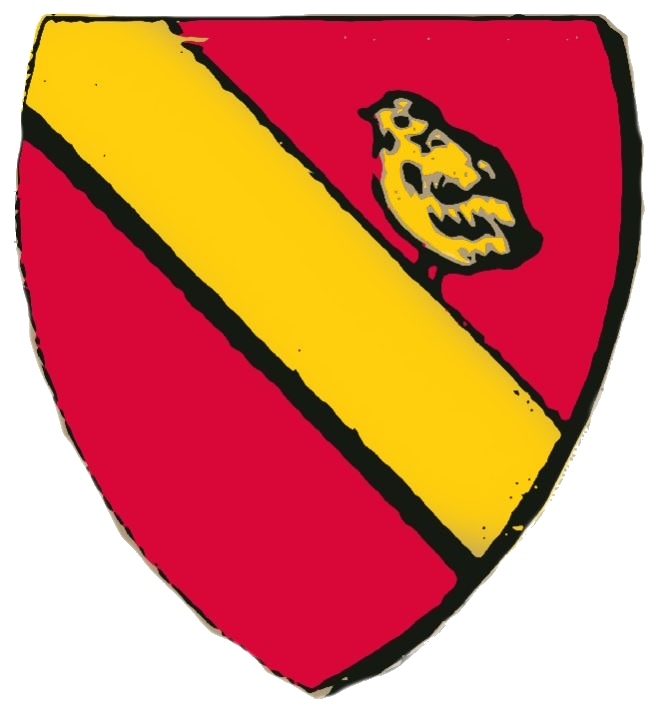As dawn broke in 1464, near Messina on a rustic mountainside, the first stone of a new convent was laid by two nuns, Sister Eustochia and Sister Jacopa. Their attire, the simple garb of the Poor Clares, mirrored their humble lives. Later, the ink from Jacopa’s pen, narrating the life of Saint Eustochia, saved an extraordinary life from being swept into the abyss of forgotten history.
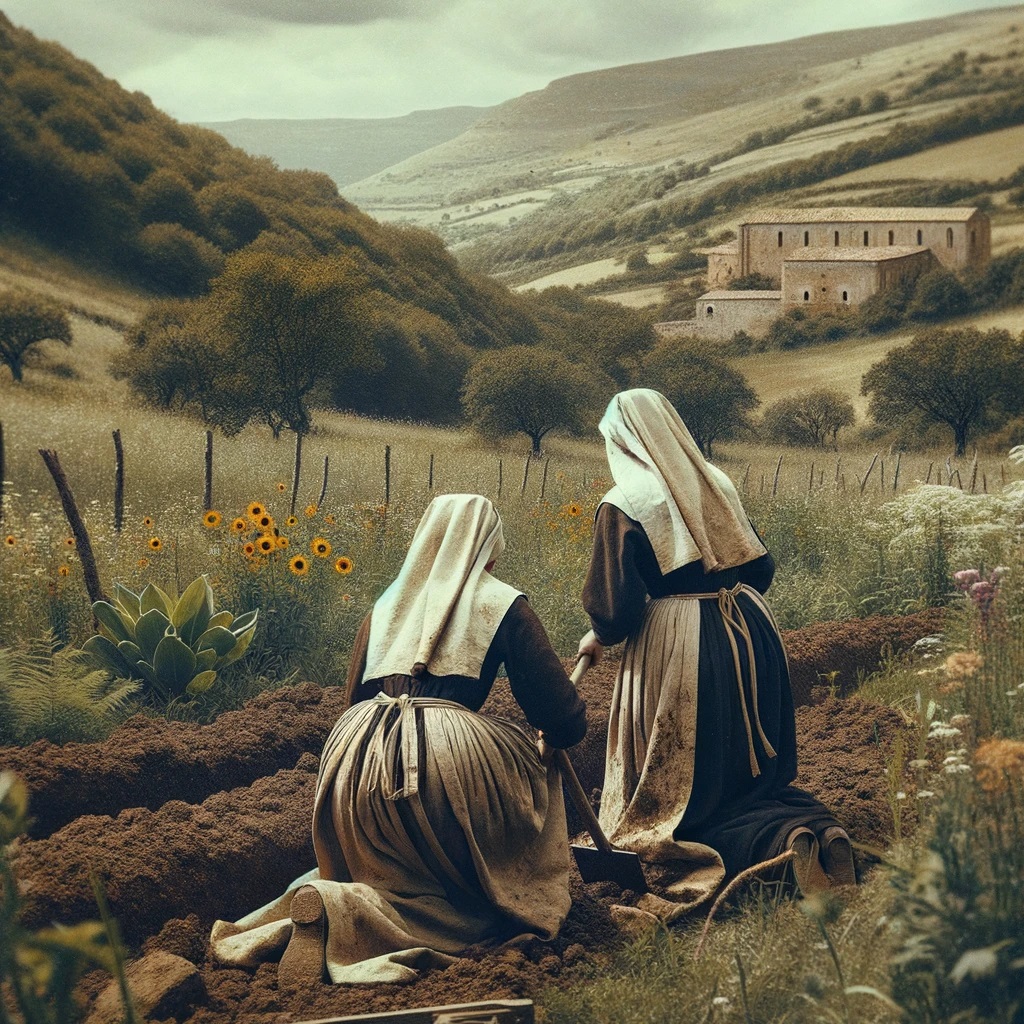
Born in 1439 into nobility, Jacopa was the daughter of Gaspare Pollicino, the baron of Tortorici. At 13 years of age, she entered the Poor Clares Monastery of Santa Maria di Basico in Messina. There, she met Smerelda (Eustochia) Calafato, five years her senior, and of a similar background. Both had renounced marriage and nobility for the Privilegium Paupertatis, the Franciscan vow of poverty. The girls became inseparable, a bond enduring till death.
Discontent with the governance of the Monastery of Santa Maria, in their twenties, they left, raising funds for a new convent. In 1464, they founded the Monastery of Montevergine in Messina. Sister Eustochia became the Abbess at 30, the earliest age at which it was possible to assume such a title.
In this new home, the Poor Clares nuns immersed in prayer, work, and introspection. They did good deeds, cared for the ill in their infirmary, and began training novices.
To establish independence from other institutions, Sisters Eustochia and Jacopa claimed they ‘found’ a book by a nearby river that they claimed came directly from St Francis of Assisi, containing the original Rules of the Poor Clares. This linked their lineage directly to the Order’s founder, and not to nearby convents, reinforcing a return to a purer form of the Rules.
At some point, Eustochia fell ill. For three years, she endured intense pain, revealing an infected sore under her breast to Jacopa two years after symptoms began. Only Jacopa was allowed to tend to her wounds. They shared a dormitory, beds side by side, with Eustochia finding solace in the passion of Christ during this time.
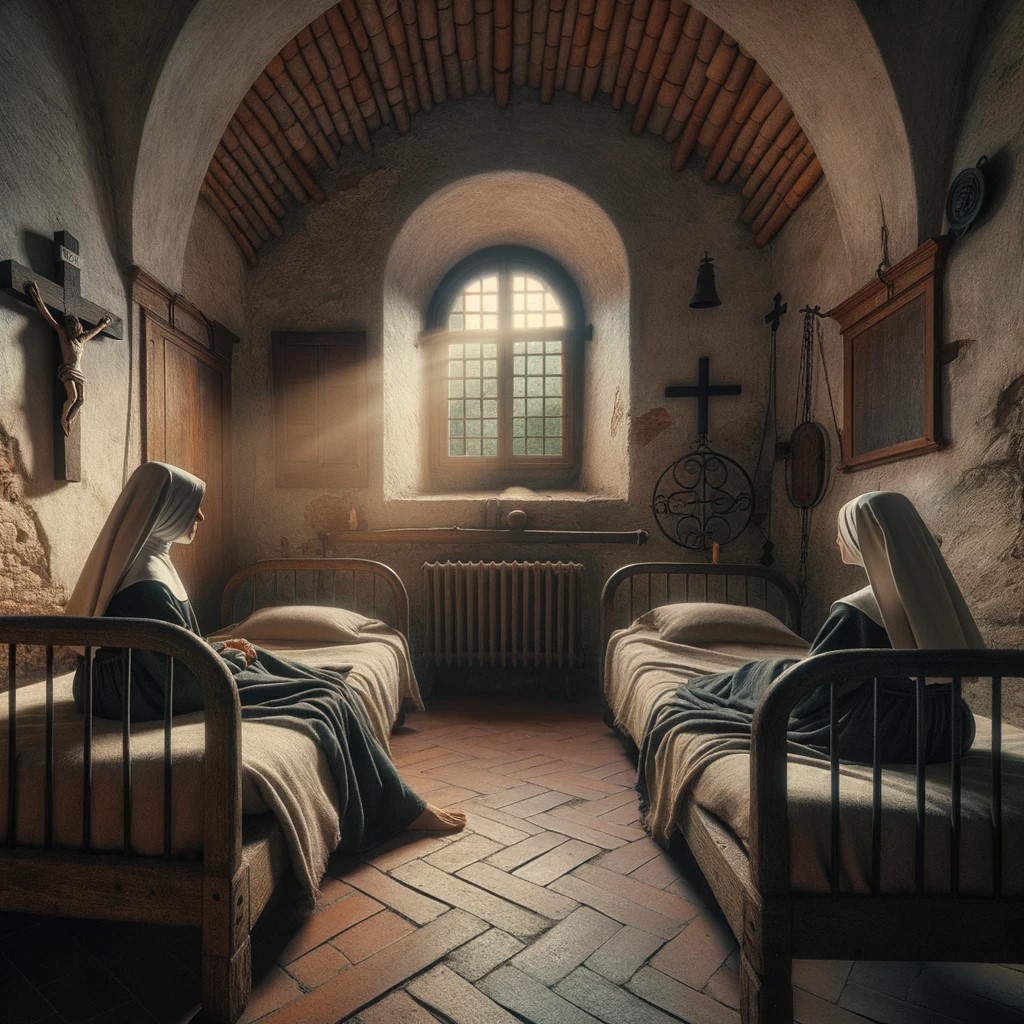
Post Eustochia’s death in 1485, Jacopa continued her mission, expanding the monastery using her family connections to secure loans and donations. She documented Eustochia’s life, crucial for Eustochia’s canonization 500 years later. The year of Eustochia’s death and details about her life were confirmed through Jacopa’s letters to other nuns.
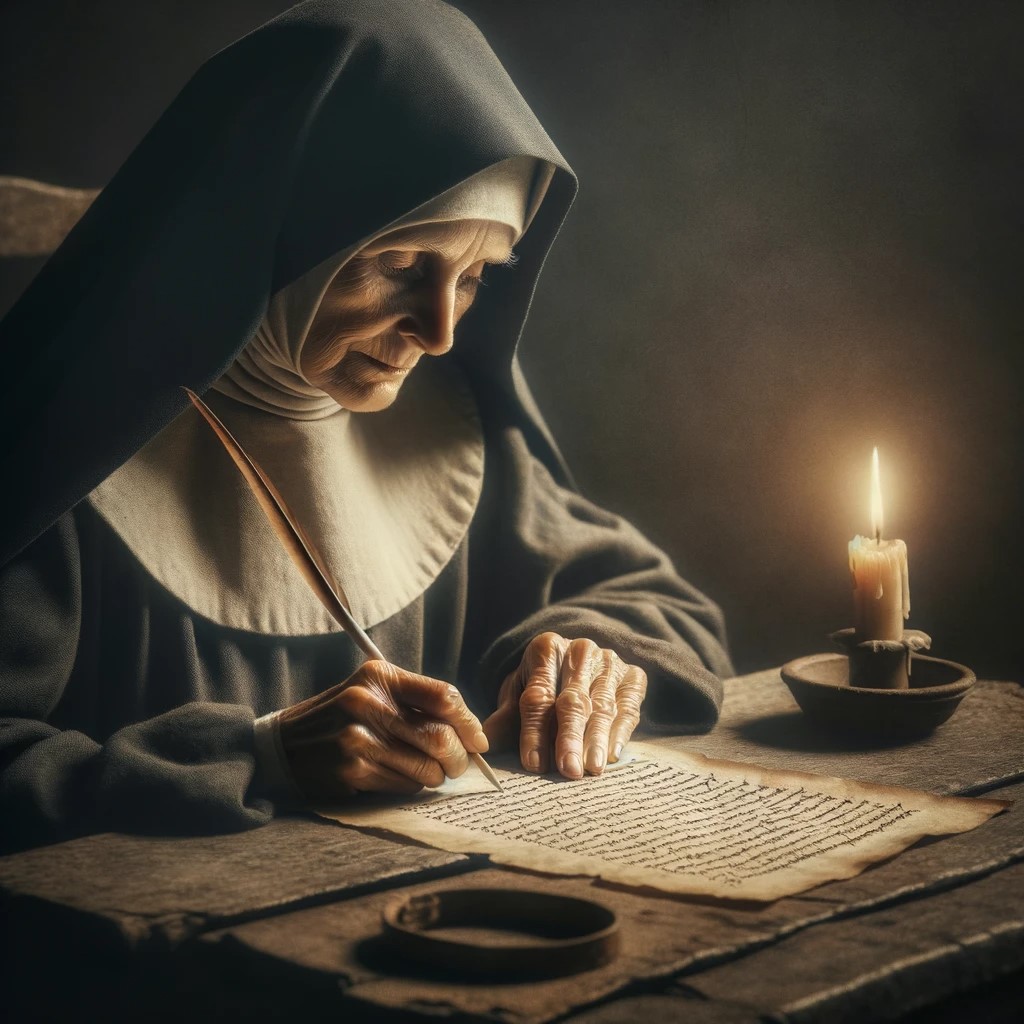
Jacopa died around 1509. A letter from that date indicates she was still alive, her left toes having been amputated, her vision almost gone.
Sr. Jacopa’s body
Sister Jacopa’s remains lie with Eustochia’s in the Monastery chapel, by all accounts on its right side.
Through an internal passage it is possible to reach the venerated remains of the Saint. Along this beaten path, ancient liturgical objects and relics are exhibited. In the upper chapel there is also the partially uncorrupted body of the Ven. Sister Jacopa Pollicino, faithful companion of S. Eustochia.
– website of Monastero di Montevergine Messina.
Inside the cabinet there is a crest bearing the coat of arms of the Pollicino, three tiny birds above a tree. The Sicilian family tree is well known to genealogists in Sicily, but we could not directly trace it into Malta.
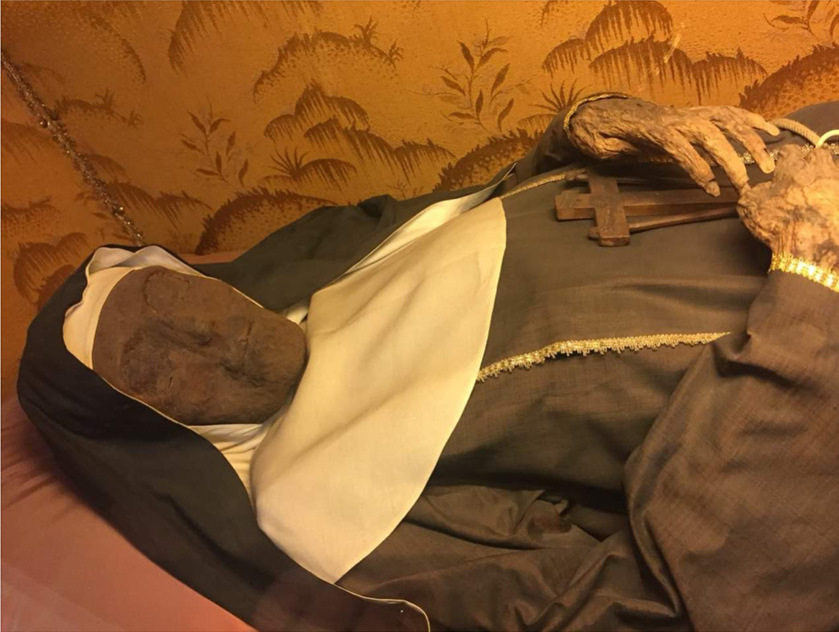
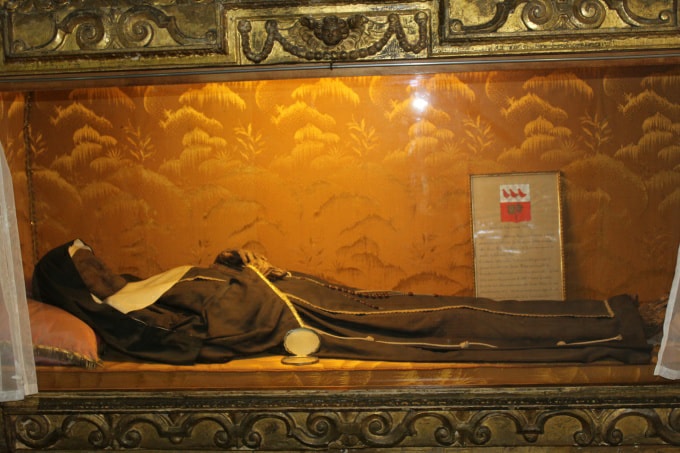
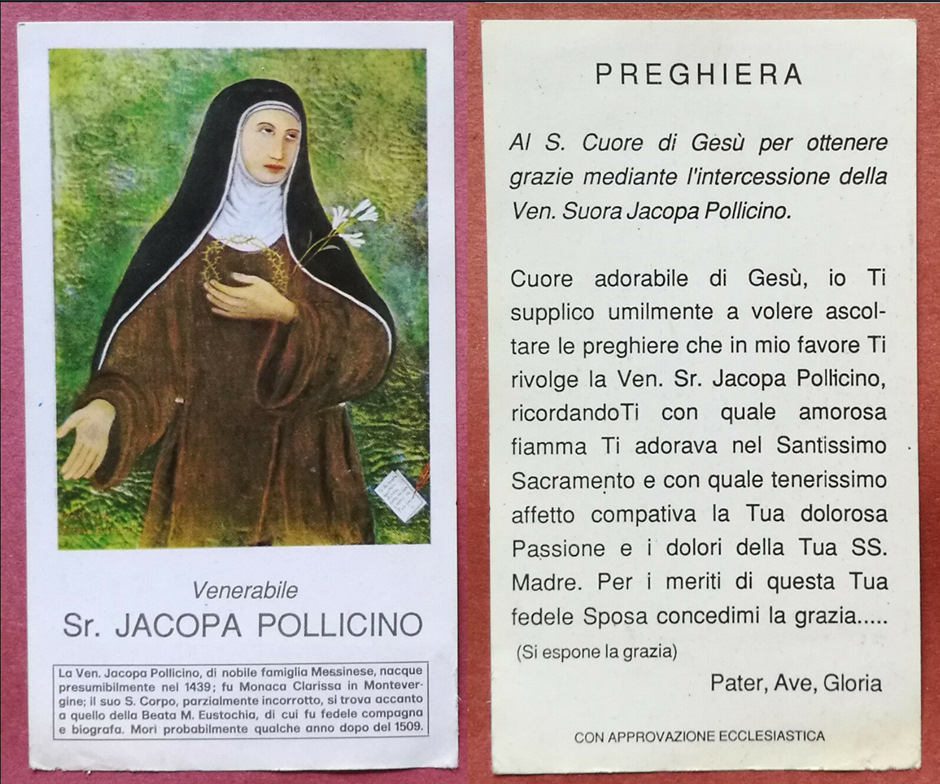
You can also view this video with an Italian TV segment on Santa Eustochia put together by John (ta’ Tony).
